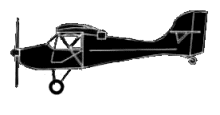
ASN Wikibase Occurrence # 289897
This information is added by users of ASN. Neither ASN nor the Flight Safety Foundation are responsible for the completeness or correctness of this information.
If you feel this information is incomplete or incorrect, you can submit corrected information.
| Date: | Saturday 13 July 2013 |
| Time: | 15:30 LT |
| Type: |  Avid Flyer |
| Owner/operator: | |
| Registration: | N399Q |
| MSN: | 399 |
| Year of manufacture: | 1990 |
| Total airframe hrs: | 578 hours |
| Engine model: | Rotax 582 |
| Fatalities: | Fatalities: 0 / Occupants: 1 |
| Aircraft damage: | Substantial |
| Category: | Accident |
| Location: | White City, Oregon -
 United States of America United States of America
|
| Phase: | En route |
| Nature: | Private |
| Departure airport: | White City, OR (OR96) |
| White City, OR (OR96) | |
| Investigating agency: | NTSB |
| Confidence Rating: |
The pilot reported that he departed in the experimental amateur-built airplane and that, during climbout, he noticed that the engine coolant temperature was above normal and continuing to rise, so he initiated a turnback toward the airport. The pilot retarded the throttle slightly and leveled off, but the temperature continued to rise. The airplane crossed the runway midfield and then entered the downwind leg. The engine rpm dropped, and the engine began running roughly and then quit as the pilot began turning the airplane onto the base leg. The pilot recognized that he would be unable to reach the runway, so he selected a field short of the threshold for a forced landing. The pilot intentionally stalled the airplane a few feet above the ground to touch down sooner because he wouldn't be able to clear a fence ahead. The airplane landed hard, and the main landing gear bungees failed. The airplane then struck the fence. The investigation could not determine why the engine coolant operating temperature reported by the pilot exceeded the engine manufacturer's maximum operating temperature or the accuracy of the installed engine temperature indication system. However, the timing of the pilot's observation of unusual coolant temperature and the subsequent loss of engine power support an engine overtemperature-related problem; postaccident engine examination was unable to determine the reason for the coolant overtemperature.
Probable Cause: Excessive engine operating temperature, which resulted in engine failure and a forced landing. The reason for the excessive engine operating temperature could not be determined during postaccident engine examination.
Accident investigation:
 |
|
Sources:
NTSB WPR13LA363
Location
Revision history:
| Date/time | Contributor | Updates |
|---|---|---|
| 05-Oct-2022 19:30 | ASN Update Bot | Added |
Corrections or additions? ... Edit this accident description
The Aviation Safety Network is an exclusive service provided by:


 ©2024 Flight Safety Foundation
©2024 Flight Safety Foundation